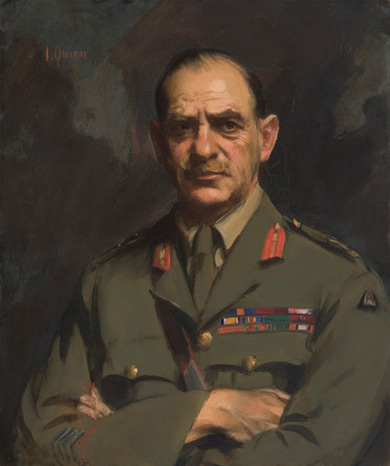John Monash
Monash poses at a slight angle to the viewer with his gaze concentrated, but indirect.
What words would you use to describe Monash’s pose and expression?
What does Monash’s pose and expression tell you about his character?
Quinn employs the conventions of military portraiture, using the three-tiered ribbon on Monash’s uniform to communicate his subject’s achievements and status.
What awards did John Monash receive in recognition of his war service?
Identify each of these on the ribbon bar in Quinn’s portrait.
Artists often use colour to create a certain atmosphere or mood in a portrait.
Describe the colours in Quinn’s portrait of Monash.
What kind of atmosphere has the artist created?
In the early 20th century, artists focussed on capturing a subject’s character through pose and expression. In his portrait of Monash, Quinn has removed all detail from the background in order to concentrate attention on the individual.
If you could add your own backdrop to the portrait, what would it be?
See a photograph of John Monash sitting for his portrait.
Move your mouse over the portrait to
see the points of interest.
About the artist
James Quinn was born in Melbourne in 1869. He studied painting and design at the National Gallery School before moving to London in 1904.
In London, Quinn established a reputation as a successful portrait painter and from 1918-19 was an official war artist with the Australian Imperial Force. This portrait of Monash is the second he completed as part of a series of Australian and British military leaders.


